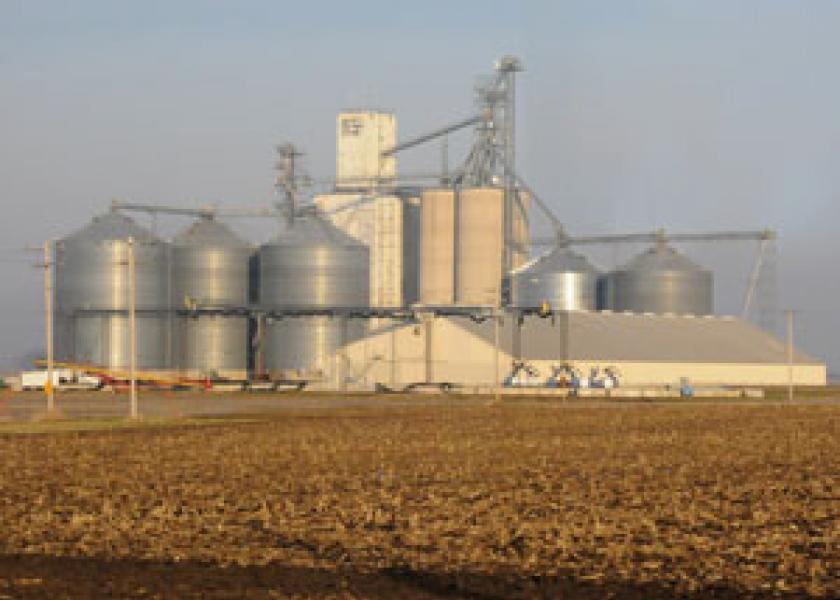Banking on Biofuels

Development ramps up for cellulosic ethanol
Athick mat of corn stubble stretches across Jeff Taylor’s fields after harvest each fall like a dense, golden carpet. The sturdy stalks, developed through years of focused breeding efforts, don’t completely decompose during the winter and interfere with spring planting. Taylor thinks he might finally have a solution. He believes a new cellulosic ethanol plant under construction a few miles south of his farm will help him turn the tough cornstalks into cash.
"All of a sudden, farmers have a market for a product that wasn’t even a commodity two or three years ago," says Taylor, who lives near Nevada, Iowa, the site of a cellulosic ethanol plant DuPont will complete in 2014.
The $200 million plant will use cornstalks and cobs, called stover, to produce 30 million gallons of biofuel annually. The site was selected, in part, because of synergies company officials hope to gain with Lincolnway Energy LLC, whose corn ethanol plant sits on an adjacent plot.
The new plant will require 375,000 dry tons of stover each year to meet the company’s annual biofuel output goal, reports James Collins, president of DuPont Industrial Biosciences. That will require DuPont to contract with up to 500 corn growers within a 30-mile radius of Nevada.
"This is the first of 100 plants we expect to build over the next 20 years," Collins says, noting that the plants will be built in heavy corn production areas.
 |
Harvesting stover offers farmers such as Jeff Taylor of Nevada, Iowa, agronomic and financial payoffs. |
Friendly fuel. Cellulosic ethanol is a renewable energy source that does not contribute to the food-versus-fuel controversy like corn ethanol. Cellulosic ethanol is produced from nonfood sources, ranging from corn stover to industrial wastes, such as paper sludge.
"The production process delivers a clean-burning, high-octane fuel that is the same as ethanol made from corn," says Dan Burden, program coordinator for the national Agricultural Marketing Resource Center.
More than 20 companies are currently exploring opportunities with the biofuel. One of them, Abengoa Bioenergy, is constructing a cellulosic ethanol biorefinery in Hutchinson, Kan. It will require 65 full-time employees upon completion in 2014.
Poet, based in Sioux Falls, S.D., is building a cellulosic ethanol plant near Emmetsburg, Iowa, via a joint venture with Royal DSM, a $12 billion Dutch-based company.
Poet plans to co-locate cellulosic production with its 27 corn ethanol plants and produce up to 1 billion gallons of cellulosic ethanol annually, reports Wade Robey, senior vice president for technology.
Some companies plan to retrofit existing ethanol plants to produce biofuels and other biochemicals. Gevo, Inc., based in Englewood, Colo., is producing isobutanol from cellulosic, nonfood biomass, says Christopher Ryan, president, chief operating and chief technology officer. Isobutanol is a naturally occurring four-carbon alcohol with applications in chemical and fuel markets.
The federal government has set a goal of producing 16 billion gallons of cellulosic ethanol annually during the next 10 years.
Development challenges in the past decade severely stunted the enthusiasm that companies and farmers initially had for cellulosic ethanol.
"I believe a lot of us have been skeptical about it," says Jim Hill, who farms with sons Ryan and Adam near Ellsworth, Iowa. "When you take my stalks away, you’re taking some of my nutrients for next year’s crop."
Taylor says his fears were put to rest once Iowa State University got involved in the DuPont project. A team led by Matt Darr, a professor in the Department of Agricultural and Biosystems Engineering, sampled each bale removed from Taylor’s fields to evaluate nutrient levels and how their removal affected his soils.
"Those projections tell me how much I need to be compensated to replace the fertility value on that field," Taylor says.
Research by Darr and a colleague, Keith Webster, indicates that harvesting stover can increase net profits for continuous corn production in Iowa to about $45 an acre.
Taylor and Hill say agronomic payoffs are the primary benefits.
"Residue contributes to pathogens and overwintering insects that can impact the next crop, so getting rid of some of that stover is good," Hill notes.
Taylor agrees: "Removing a small amount of stover saves a tillage pass, and I get warmer soils faster in the spring. I also get more consistent seeding depth and better crop emergence," he says.
Most companies take no more than 50% of the available stover from a corn field in any given year.
One pass or two? Companies working to meet stover harvest requirements include AGCO, Case IH, Claas, Demco, John Deere and Vermeer. Most are evaluating some version of a
one- or two-pass harvest process. In the two-pass process, farmers harvest their own grain and the company collects the stover; in the one-pass process, the company harvests both the corn and stover. Hill and Taylor prefer the one-pass process as it eliminates the need to purchase equipment.
Taylor says that based on their experiences, he and his 82-year-old dad, Bob, believe stover harvest holds promise for corn growers.
"He remembers the Great Depression and Dust Bowl, so we said no twice before we said yes to trying this," Taylor adds. "If you can convince someone from that era like my dad to remove stover from their fields, you know you’re on to something."
 |
You can e-mail Rhonda Brooks at rbrooks@farmjournal.com.







